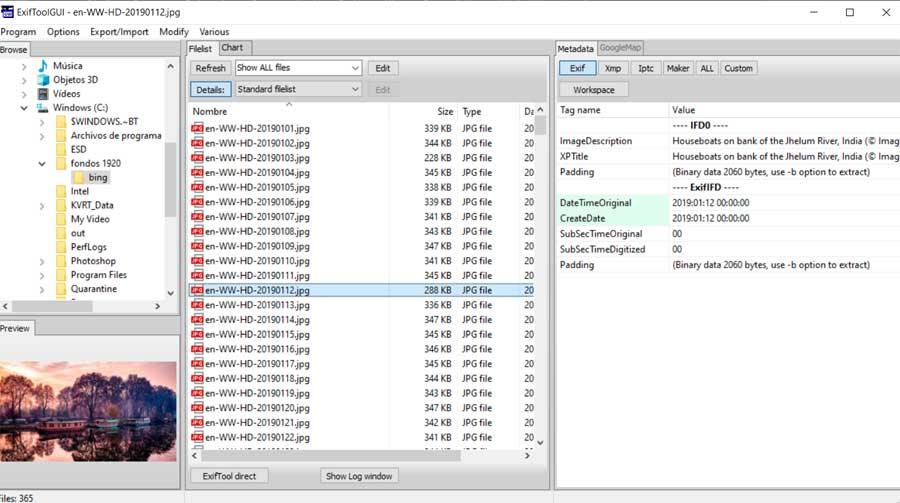

Profile Copyright : Copyright (c) 1998 Hewlett-Packard Company You should expect a list of data describing the image such as below: ExifTool Version Number : 10.00įile Modification Date/Time : 2015:10:11 18:58:06+02:00įile Access Date/Time : 2015:10:13 12:41:47+02:00įile Inode Change Date/Time : 2015:10:11 18:58:06+02:00ĭevice Attributes : Reflective, Glossy, Positive, ColorĬonnection Space Illuminant : 0.9642 1 0.82491 The correct path file depends on where it is stored, if it is in your Desktop the right command would be " exiftool /home/user/Desktop/Ibiza.jpg" Go to your terminal and type the following command: " exiftool Ibiza.jpg" using your correct image path and filename. Sudo apt-get install exiftool Basic usage to read an image metadata This example shows how to install ExifTool on Debian terminal:

You can get the source and download ExifTool through their website or you should be able to use your own package management system such as yum, pacman, apt-get or brew to easily install it on any UNIX Operating Systems (MacOS or Linux). Images by their metadata and to extract geo-location information. It is a powerful tool with many possibilities, it offers users the option to organise InstallĮxifTool is a software that can read, write and edit different metadata formats including EXIF, GPS, IPTC, XMP, JFIF, GeoTIFF, ICC Profile, Photoshop IRB, FlashPix, AFCP and ID3. However, users can not know how those online services work and how secure uploaded images are when they are uploaded to unknown servers and often these online services are restrictive in the number of images they can process at a given time. This how-to covers two things: the basic steps for using open-source metadata extraction software on your desktop and secondly how to extract geo-location information from a large number of images. There are a few ways to retrieve geo-location data from images, the easiest is to use an online tool, such as or Jeffrey's Exif viewer, where the user can uploadĪn image and look at the metadata information available. The Instagr.am investigation case study that is featured on Behind Metadata offers a few examples of how this geo-location metadata could be used to verify, expose and protect. These fields could include the model of the camera, the time it was taken, whether the flash was used, the shutter speed, focal length, light value and even the location. When an image is taken using a smartphone or camera certain metadata fields are often attached to it. A how-to guide covering the basic steps for using open-source metadata extraction software on your desktop and extracting geolocation information from a large number of images.


 0 kommentar(er)
0 kommentar(er)
